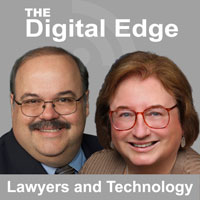Ride the Lightning
Cybersecurity and Future of Law Practice Blog
by Sharon D. Nelson Esq., President of Sensei Enterprises, Inc.
Intel’s FakeCatcher Detects a Deepfake With 96% Accuracy Rate
November 30, 2022
In a major development, ZDNet reported on November 17 that Intel’s new deepfake detector can spot a real or fake video based on blood flow in video pixels, with a 96% accuracy rate.
It’s no surprise to hear how often someone takes an image or video and uses someone else’s face or voice to create a new, fake image of people or occurrences.
Good deepfakes have created many instances of misinformation, hoaxes, and fraud, disseminated online. Intel’s new technology is called “FakeCatcher.”
As we all know, deepfakes use advanced technology derived from machine learning and artificial intelligence to create uncannily accurate impressions of celebrities and politicians doing and saying things they haven’t done or said.
Current technologies can take hours and hours to identify a deepfake, as they use deep learning to investigate signs of digital manipulation.
But Intel’s FakeCatcher can detect a deepfake in real time by “assessing what makes us human – ‘blood flow’ in the pixels of a video,” according to a press release.
Intel says its technology can identify changes in our veins’ color when blood circulates through the body. Signals of blood flow are then collected from the face and translated by algorithms to discern if a video is real or a deepfake.
Identifying a deepfake quickly is increasingly important. Many are sexual exploitations – others foster distrust in the media. Scammers have used deepfakes to pose as job seekers to access sensitive company information. They are also used to impersonate prominent political figures making inflammatory statements.
Although some movements and mannerisms in deepfakes give away the deception, most people mindlessly scroll through their Twitter feed and don’t take the time to assess whether a video is real or fake.
Deepfakes thrive on the time they have to circulate, getting millions of social media shares. 63% of adults in the US admit that a deepfake video has confused them about current events, according to the Pew Research Center.
I am always pleased to see advancement in the speed of detecting deepfake videos – and 96% accuracy (along with the speed of discovery) is most encouraging.
Hat tip to Dave Ries.
Sharon D. Nelson, Esq., President, Sensei Enterprises, Inc.
3975 University Drive, Suite 225, Fairfax, VA 22030
Email: Phone: 703-359-0700
Digital Forensics/Cybersecurity/Information Technology
https://senseient.com
https://twitter.com/sharonnelsonesq
https://www.linkedin.com/in/sharondnelson
https://amazon.com/author/sharonnelson

